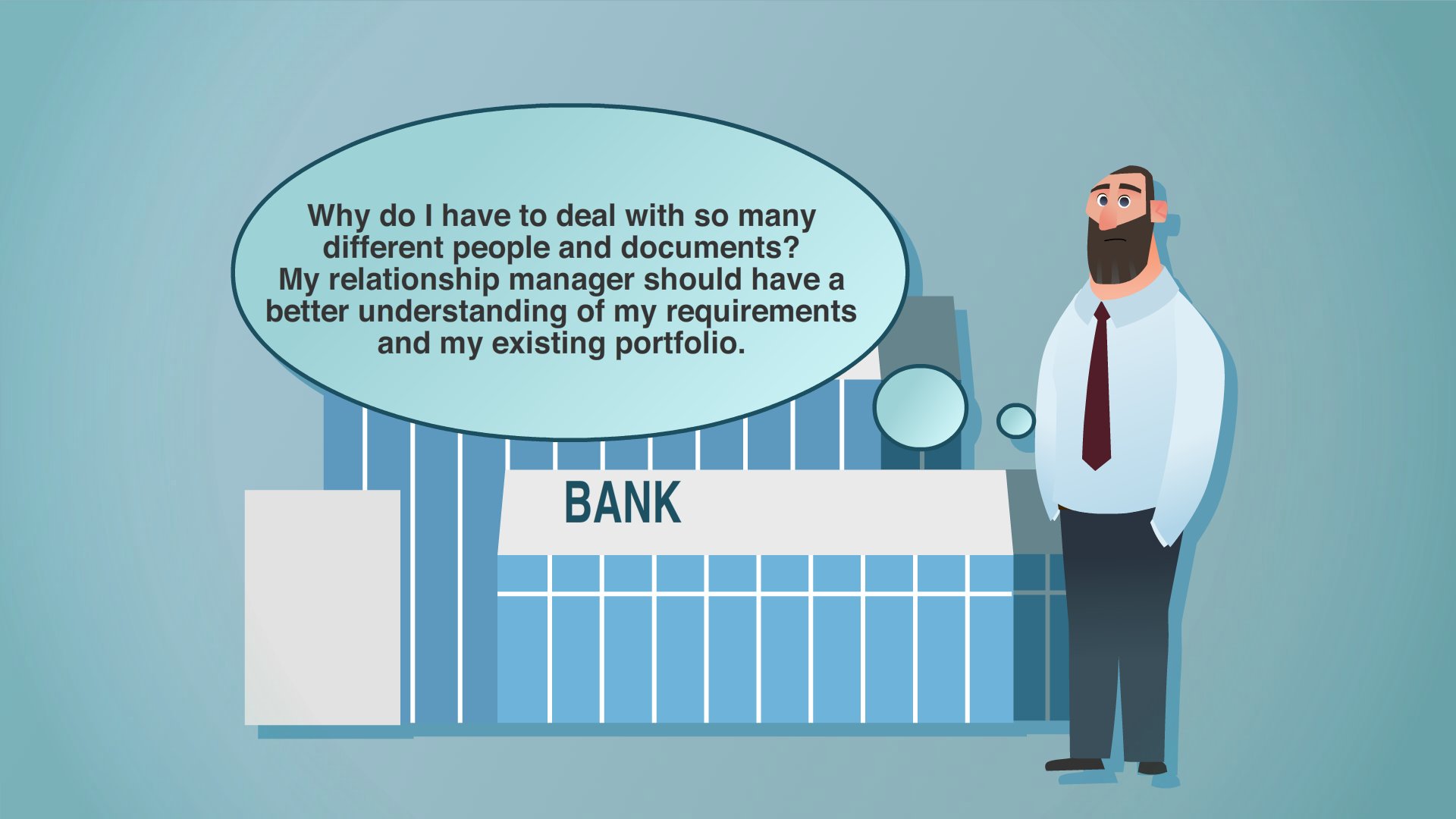Confusing Product Information Management (PIM) with Master Data Management (MDM) can lead to far worse outcomes than mere embarrassment.
Today, effective data management makes or breaks organizations. And as you collect more and more data – across multiple systems – the more important it becomes to get these key terms right.
Many business leaders view them as competing solutions, forcing them to choose one over the other. This either-or mentality often results in partial solutions that fail to address all organizational data needs.
PIM and MDM serve different but complementary purposes in your data ecosystem.
In this blog post, you will learn all the essentials:
- What is Product Information Management?
- What is Master Data Management?
- PIM vs. MDM: Key differences
- When to Use PIM vs. MDM
- The Case for Using Both Solutions
- How Stibo Systems Integrates PIM and MDM
Key takeaways
- PIM and MDM are not competing solutions but complementary systems that address different aspects of data management within organizations.
- PIM specializes in enriching and distributing product information across marketing and sales channels, while MDM creates governance and consistency for all critical business data domains.
- Most organizations eventually need both systems as they scale, with PIM handling customer-facing product content and MDM managing enterprise-wide data accuracy and compliance.
- The choice between starting with PIM or MDM depends on your most pressing pain points, whether that is inconsistent product information across channels or fragmented data across departments.
- Modern integrated platforms like Product Experience Data Cloud combine both PIM and MDM capabilities, eliminating the complexity of managing separate systems while providing comprehensive data management.
INTERACTIVE EXPERIENCE
Better product experiences. And better conversions.

Why it’s important to know all this
Maybe you're struggling with inconsistent product information across your sales channels, battling data silos across departments, or just trying to establish a reliable single source of truth for your organization.
When you understand exactly what each solution does, and how they work together, you can turn your data management from a fragmentation and frustration, into a real competitive advantage.
Let’s start with the basics:
What is Product Information Management (PIM)?
Product Information Management (PIM) focuses specifically on creating, managing and distributing product data across your sales and marketing channels.
It’s your central hub for all product-related information, making sure it is consistent and accurate everywhere your products appear.
At its very core, PIM handles the collection, enrichment and delivery of product data. From basic specifications and pricing to compelling descriptions, high-quality images, and other digital assets that help you drive conversions.
In other words, you avoid the chaos of spreadsheets, disconnected systems and manual updates that plague so many organizations.
Key capabilities of PIM systems
Data consolidation
PIM pulls product data from multiple sources into a single repository, giving you one authoritative version of your product information. Whether it's coming from ERP systems, supplier feeds or legacy spreadsheets, PIM brings it all together.
Content enrichment
Beyond basic attributes, PIM lets you transform raw product specifications into compelling customer-facing content. You can add marketing descriptions, videos, size charts, usage instructions and other assets that help customers buy.
Data quality control
No more publishing incomplete or inaccurate product listings. Built-in validation rules and completeness checks catch missing fields, formatting errors and inconsistencies before they reach your customers.
Multichannel distribution
Connect once, publish everywhere.
Modern PIM systems distribute your product content to websites, marketplaces, mobile apps, print catalogs and in-store displays. And it’s all automatically formatted to meet each channel's specific requirements.
Localization support
If you’re a global business, managing multiple languages and regional variations can be overwhelming. PIM simplifies this by organizing translations and region-specific attributes in a structured way. It makes international expansion more manageable.

The business benefits of implementing PIM
Faster time-to-market
When your product data is already centralized and enrichment workflows are automated, you can launch new products in days rather than weeks or months.
This is indispensable for organizations with massive catalogs. Many companies report 60-80% reductions in product introduction cycles.
Higher conversion rates
Complete, accurate information makes your customers more confident. Rich product content with multiple images, videos, and detailed specifications can boost conversion rates by 15-30% compared to basic listings.
Reduced returns
"Not as described" is one of the most common reasons for product returns. With complete and accurate product information, customers know exactly what they're getting.
Simplified channel expansion
If you want to sell on a new marketplace or launch in another country, your PIM makes it easier to adapt your product catalog for new channels.
Team efficiency
Stop wasting valuable marketing and sales time hunting down basic product information. A PIM frees your creative teams to focus on strategy and innovation instead of entering and reconciling data.
PIM solutions are especially valuable for retailers, manufacturers and distributors that manage hundreds or thousands of products across multiple channels.
If your organization struggles with inconsistent product information and manual updates across channels, or if it’s difficult to launch new products quickly, a PIM system might be the solution you need.

What is Master Data Management (MDM)?
Master Data Management (MDM) takes a broader approach to data management. It creates a single source of truth for critical business data across your whole organization.
When PIM only focuses on product information, MDM sometimes covers multiple data domains including:
- Customers
- Vendors
- Locations
- Employees
- Products
Essentially, MDM addresses the challenge of inconsistent, duplicate, or contradictory information that exists when each department maintains its own data silos.
Your MDM system gives you unified master records for key business entities, making your reporting, analytics, and decision-making far more accurate.
Key capabilities of MDM solutions
Multidomain data consolidation
Multidomain MDM brings together critical data from across your business.
Instead of managing each type of data separately, it creates relationships between domains. You can see, for example, which customers purchased which products from which locations.
Data governance framework
With MDM, you can establish (and make sure they’re followed) policies about how data is:
- Created
- Maintained
- Used
- Secured
You do this by, for example, defining data ownership, access rights and quality standards that meet your regulatory requirements.
Matching and merging
One of MDM's most powerful features is its ability to identify and resolve duplicate entries.
Advanced algorithms detect when multiple records likely refer to the same entity (like a customer with slightly different name spellings), so you can hold on to that unified view of each customer.
Data lineage and audit trails
MDM lets organizations – especially those in highly regulated industries – fully track:
- Where data came from
- Who modified it
- When changes occurred
They are given a complete audit history that supports compliance requirements and helps troubleshoot any data issues that appear.
Workflow orchestration
Beyond simply storing data, MDM can trigger workflows and processes when data changes occur. The right people can be notified, and appropriate actions can be swiftly taken.

The business benefits of MDM implementation
Improved decision-making
When executives and managers can trust the accuracy of enterprise data, they can make better strategic choices. Different departments can work from the same sets of facts.
Regulatory compliance
If you’re in an industry with strict data governance requirements, MDM gives you the controls, documentation and audit capabilities you need to keep regulators happy and avoid hefty compliance penalties and fines.
Operational efficiency
By avoiding duplicate records and keeping your information consistent across systems, MDM reduces the time your employees need to spend reconciling conflicting data or searching for accurate information.
If you’re a large organization, this can save you millions each year.
Enhanced customer experience
When you have a complete view of customer relationships, interactions and purchase history, your teams can give each customer more personalized service and relevant offers.
Merger and acquisition support
When two organizations combine, you each bring your own systems and data sources. MDM makes it much easier to integrate these and create a unified view of the combined business.
Earlier, in the PIM section, I mentioned some industries that benefit a lot from PIM solutions (retail, manufacturing and distribution). Those organizations also benefit from MDM solutions.
But additionally, MDM solutions are important if you’re a large enterprise. Especially in regulated industries like financial services, life sciences or telecommunications.
If your organization struggles with inconsistent data across departments, lacks visibility into enterprise-wide relationships or faces significant compliance challenges, an MDM solution is often the answer.

PIM vs. MDM: Key differences at-a-glance
It’s important to understand the distinctions between PIM and MDM, so you know which one is best for your specific challenges.
PIM optimizes how you present and sell products. MDM brings governance for all critical organizational data. Think of PIM as a subset of MDM; MDM encompasses various data domains, whereas PIM solely focuses on product data. MDM focuses on creating a single trusted view of master data across the organization for accuracy and consistency, whereas PIM is business-driven, focusing on the creation and distribution of high-quality product information - typically for marketing and sales channels.
PIM is great at enriching and distributing product information across customer touchpoints. MDM keeps all your master data consistent across internal systems and processes.
These differences explain why many organizations have both solutions – they solve related but distinct challenges in your data management strategy.
Here's how they compare across key dimensions:
| Aspect | PIM | MDM |
|
Data scope |
Product information only |
Multiple data domains (customers, products, suppliers, locations, etc.) |
|
Primary focus |
Enrichment and distribution of product content |
Governance and integration of all master data |
|
Business orientation |
External: marketing, sales, customer-facing |
Internal: operations, analytics, compliance |
|
Key users |
Marketing, merchandising, ecommerce teams |
IT, data stewards, business analysts, executives |
|
Content types |
Rich content: descriptions, attributes, digital assets, translations |
Structured data: IDs, relationships, hierarchies, reference data |
|
Channel focus |
Omnichannel publication and syndication |
Cross-system consistency and integration |
|
Typical objectives |
Faster time-to-market, improved conversion rates |
Better decision-making, regulatory compliance |
|
Scale |
Hundreds to millions of products |
All critical data entities across the organization |
|
Typical triggers |
Product catalog growth, channel expansion |
Data quality issues, compliance mandates, reporting inconsistencies |
|
Technical integration |
Connects to commerce platforms, marketplaces |
Interfaces with ERP, CRM, finance systems |
When to use PIM vs. MDM
Signs you need (at least) a PIM solution
Your product catalog keeps growing in complexity
Your spreadsheets can't handle your expanding portfolio anymore. Your teams struggle to maintain accurate information for thousands of products, each with dozens of attributes, multiple images, and variant relationships. To scale, you need structure and simplicity.
Product information is inconsistent
Your customers get confused by conflicting product details across channels. A shopper sees one description on your website, another in your catalog, and completely different details on Amazon.
Less trust, lower conversion rates, and more returns.
Product launches take too long
Your competitors keep beating you to market. By the time you manually update product information across all your sales channels, you've already missed valuable selling time. This hurts extra if you’re in seasonal or trend-driven markets.
Channel expansion is too complicated
You want to sell in more places but dread the work involved. Each new marketplace or retail partner means copying, reformatting and maintaining another set of product data. And you don’t want to hire an army of data enterers.
You have too many returns
You're drowning in "not as described" returns. When customers receive items that don't match what your product listings led them to expect, they send them back.

Signs you need an MDM solution
Data is inconsistent across departments
Your departments live in different realities.
- Sales doesn't recognize the customers that marketing targets.
- Finance pays suppliers that procurement doesn't track.
These disconnects give you daily headaches. From mishandled customer interactions to duplicate payments... it becomes impossible to work as a unified company.
Regulatory compliance is too challenging
Audits give you cold sweats. Whether it's GDPR, CCPA or industry regulations, your scattered approach to data management puts you at risk.
You can't easily show who has access to what data, where it came from or how it's protected. In other words: You are vulnerable to penalties and reputation damage.
Mergers or acquisitions are a constant problem
Whether you're buying another business or preparing to be acquired, how quickly you can merge systems and data directly impacts success.
Without MDM, you'll spend months or years manually reconciling conflicting records and systems... and then it’s time for the next merger.
Your reporting is a real mess – and your forecasting unreliable
No one believes your numbers anymore.
- Your sales reports show different totals than finance reports.
- Regional managers dispute corporate figures.
- Last month's numbers mysteriously change when you run the same report again.
Nobody can make confident decisions based on data with these types of inconsistencies.
Identity resolution problems
You can't tell how many actual customers you have. The same person appears in your database three times with slight variations in name and address.
Maybe you accidentally treat your best customer like three separate people with fragmented purchase histories. Those kinds of data quality issues undermine everything from marketing campaigns to financial forecasts.

So, when do you need both PIM and MDM?
As I mentioned a couple of times already, it is very common to have both types of systems. There are many reasons for this, but let me share a few.
You simply have challenges that span both categories
If you’re like many organizations, your problems just don't fit neatly into just product data or just enterprise data.
Your marketing team needs better product information AND your finance department needs consistent customer and vendor records.
You're pursuing digital transformation
You can't transform what you can't manage.
- AI initiatives
- Personalization efforts
- Automation plans...
...all depend on having clean, reliable data. PIM and MDM give you different but necessary foundations for your digital evolution.
Your business is scaling fast
Growth creates data chaos on multiple fronts. As you add products, enter new markets and build more complex operations, you're outgrowing your improvised approaches to both product information and enterprise data management.
You're building a competitive advantage through data
You see how market leaders use data to pull ahead.
They create better customer experiences through rich product content, and they also run more efficient operations through well-governed enterprise data. So, you'll need both capabilities to compete at their level.

Now, let’s dig a bit deeper into how PIM and MDM work together.
The case for using PIM and MDM together
Many organizations think they must choose between PIM and MDM. But as should be clear by now, that misconception can lead to bad outcomes. With this either-or mindset, you usually get partial solutions that address immediate pain points but create new challenges down the road.
Let me explain why thinking about PIM and MDM as complementary rather than competing solutions makes more sense.
How PIM and MDM work together
PIM and MDM naturally complement each other because they handle different aspects of your data ecosystem:

PIM manages the enrichment and distribution of product information for marketing and sales purposes. It’s great at handling rich content like:
- Descriptions
- Specifications
- Images
- Videos
- Other assets that drive customer engagement and purchasing decisions
MDM, meanwhile, gives you the foundational elements of your products and other business entities. It maintains the:
- Core identifiers
- Classifications
- Relationships
...all of which connect your products to customers, locations, suppliers, and other critical business domains.
When you use them together, MDM provides the stable, consistent core data that PIM builds upon with rich, channel-ready content.
You get a totally seamless flow from basic product definition to compelling, customer-facing information.
A real-world scenario of PIM-MDM integration
Here's how the integration typically works in practice:
- A manufacturer creates a new product in their MDM system, establishing basic identity, classification and core attributes.
- These core elements flow to multiple systems, including PIM.
- The marketing team then uses PIM to enrich this core record with compelling descriptions, high-quality images, videos and other sales materials.
- They adapt this content for different markets, channels, and customer segments.
- When core product details change (like dimensions or materials), the update happens once in MDM and automatically propagates to PIM and other systems, maintaining consistency.
- The rich content created in PIM flows to customer-facing channels like websites, marketplaces and retail partners, driving sales and delivering accurate information.
You get the best of both worlds: rock-solid core data governance with MDM and powerful marketing enablement with PIM.
5 Ultimate benefits of combining PIM with MDM
Before we move on, let’s just briefly summarize – at a high level – what the benefits are with the PIM-MDM combo.
- Your product attributes stay consistent across all systems because they come from a single MDM source, and your marketing content gets specialized enrichment in PIM.
- You get enterprise-wide data governance controls from MDM for core data alongside marketing-specific workflows in PIM that match how different teams need to work.
- Your technical staff get more efficient working in MDM with tools designed for their needs while marketing teams use PIM interfaces built specifically for content creation and channel management.
- You reach faster time-to-value when you can start with whichever solution addresses your most urgent pain points, then add the complementary system as your strategy matures.
- You get a future-proof foundation that supports advanced initiatives like personalization and AI-driven recommendations without major rework later.

Bringing it all together into one platform
As we have already established, PIM and MDM solutions need to work together. The problem is that implementing and integrating separate systems can be a headache.
In large organizations, that headache can be huge, which is why we at Stibo Systems came up with a more comprehensive approach, with everything in one place.
CRASH COURSE
3 Steps to Better Product Experiences

PIM evolves into PXM – Product Experience Management
The Stibo Systems approach is based on the concept of Product Experience Management (PXM), which is the next step beyond traditional PIM.
PIM focuses on organizing and managing product data.
PXM takes a broader view by enhancing the whole customer experience with personalized product content.
Traditional PIM solutions focused on storing and managing product data. But today, your customers expect dynamic product content tailored to their needs. That can mean localized descriptions, multimedia content or AI-driven recommendations – without it, you could fall behind.
You could say that PIM is a critical component within the PXM framework. PIM is the foundation, and PXM is the complete building.
Stibo Systems Product Experience Data Cloud
At Stibo Systems, we address this evolution with our solution: Product Experience Data Cloud (PXDC). It is built on the Stibo Systems Platform and used by many of the world’s most successful companies, and handles the full spectrum of product data needs.
The PXDC approach tackles the PIM-MDM integration challenge by creating a seamless flow of data across your organization.
| Product Information Management (PIM) The foundation of high-quality product data, speeding up time-to-market and improving the buying experience. |
Digital Asset Management (DAM) Drive faster time-to-market by easily locating, updating and sharing digital assets for sales and marketing. |
Drive efficiency by onboarding product data directly from suppliers, content service providers or data aggregators. |
|
Share high-quality product data with retailers and other business partners efficiently. |
Enable fast and scalable product content creation which drives greater consumer engagement. |
Support compliance with industry requirements and enhance brand perception. |
|
Provide visibility of digital shelf performance to drive informed decisions that increase conversions. |
Enable efficient product storytelling at scale for increased sales conversions and reduced returns. |
Connect products, customers and places Link products to locations and customers for personalization. |
PXDC starts by connecting data sources, breaking down data silos.
By linking internal and external data sources, it creates a single version of truth for your product information. So, no more conflicting product specifications across departments.
Once the data is connected, PXDC helps you transform raw product data into rich, engaging content. Your teams can add images, videos, localized descriptions, and technical documents – all this with high data quality and consistency.
The platform also makes sharing your product data remarkably simple. Whether you're sending data to Amazon, your own website or retail partners, PXDC handles the formatting and delivery automatically. You create the content once, then publish it everywhere.
What makes this approach particularly effective is how it handles different industry needs.
- Retailers can onboard supplier data at scale and use AI to enhance product descriptions.
- CPG companies can consolidate data from various internal sources and apply localization for global markets.
- Distributors can manage compliance certifications and syndicate data to numerous ecommerce platforms.
- Manufacturers can finally create that elusive single source of truth for product data.
...and so on.
Let’s look at an example
The real magic happens when you see how all these components work together. Let me walk you through a typical scenario.
- A product manager creates a new item in the system, establishing its basic identity and attributes.
- The marketing team then enriches this foundation with compelling descriptions and high-quality images.
- As the product launches in different markets, localization teams adapt the content for each region.
- Meanwhile, the compliance team ensures all necessary certifications and sustainability information is attached to the product.
- When core details change, the update happens once and propagates throughout the system, maintaining consistency.
All of this within a single platform, eliminating the integration headaches that come with managing separate PIM and MDM systems.
This is how we at Stibo Systems help organizations avoid the "either-or" trap of choosing between PIM and MDM.
Conclusion
The debate between PIM and MDM isn't about finding a winner. It's about figuring out how these tools can work together to solve your specific data challenges.
Throughout this article, we've seen that PIM helps you create rich product content that sells, while MDM gives you control over all your critical business data. They're not competing solutions, but rather addressing different but connected problems you likely face.
You'll probably start your journey with either PIM or MDM based on what's hurting most right now.
- If you're drowning in product information across multiple sales channels, you might grab PIM first to get that under control.
- If you can't get consistent customer or supplier data across departments, MDM might be your first step.
But if you're serious about managing your data for the long haul, you'll likely end up using both. As we've explored with Stibo Systems' Product Experience Data Cloud (PXDC), there's also a third option: Implementing an integrated platform that combines the strengths of both PIM and MDM approaches from the beginning.
Many of the organizations we work with eventually implement both solutions as they realize good data management needs both specialized product content tools and broader data governance.
With an integrated platform like PXDC, you can avoid the complexity of managing separate systems while still getting the full benefits of both PIM and MDM capabilities.
So, as you think about your own approach, don't get stuck on "PIM versus MDM." Instead, focus on your specific business problems and where you want to go. You can start with one solution now and add the other later, or look for an integrated platform that gives you everything in one system.
What matters is understanding what each approach does best and finding the right combination for your unique needs.
Frequently asked questions
How do I know whether my organization needs PIM or MDM first?
Look at your biggest data pain points right now. If you are struggling with inconsistent product information across sales channels, product launches taking too long, or high return rates due to inaccurate descriptions, start with PIM.
If you have data inconsistencies across departments, regulatory compliance challenges, or unreliable reporting, MDM should be your first priority.
Can I implement PIM without having MDM in place?
Yes, you can start with PIM independently, especially if your primary challenges involve product content management and channel distribution. But as your organization grows and data complexity increases, you will likely need MDM to maintain data quality and governance across all business domains.
What happens to my existing data when I implement these systems?
Both PIM and MDM systems are designed to integrate with your existing data sources. They pull information from ERP systems, spreadsheets, supplier feeds and other current sources into centralized repositories.
The key is having a proper data migration strategy and cleansing process during implementation.
What is the difference between traditional PIM and Product Experience Management?
Traditional PIM focuses on organizing and managing product data, while PXM takes a broader approach by enhancing the entire customer experience with personalized, dynamic product content. PXM includes capabilities like localized content and multimedia management that go beyond basic data storage.
How do integrated platforms compare to implementing separate PIM and MDM systems?
Integrated platforms eliminate the complexity of managing multiple systems and ensure seamless data flow between product information and enterprise data management.
While separate systems might offer more specialized features, integrated platforms provide better coordination, reduced maintenance overhead and faster implementation timelines for organizations that need both capabilities.
Boost Your Product Experience
See how your brand measures up with our Product Experience Maturity Model.






































































































































































































